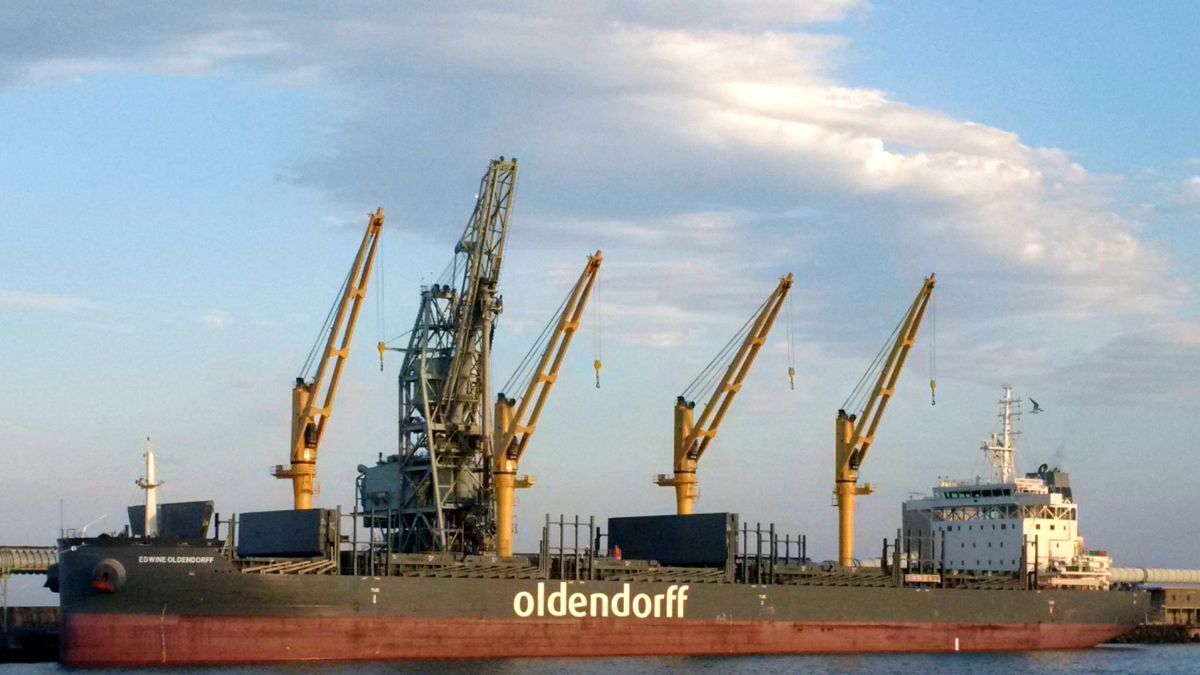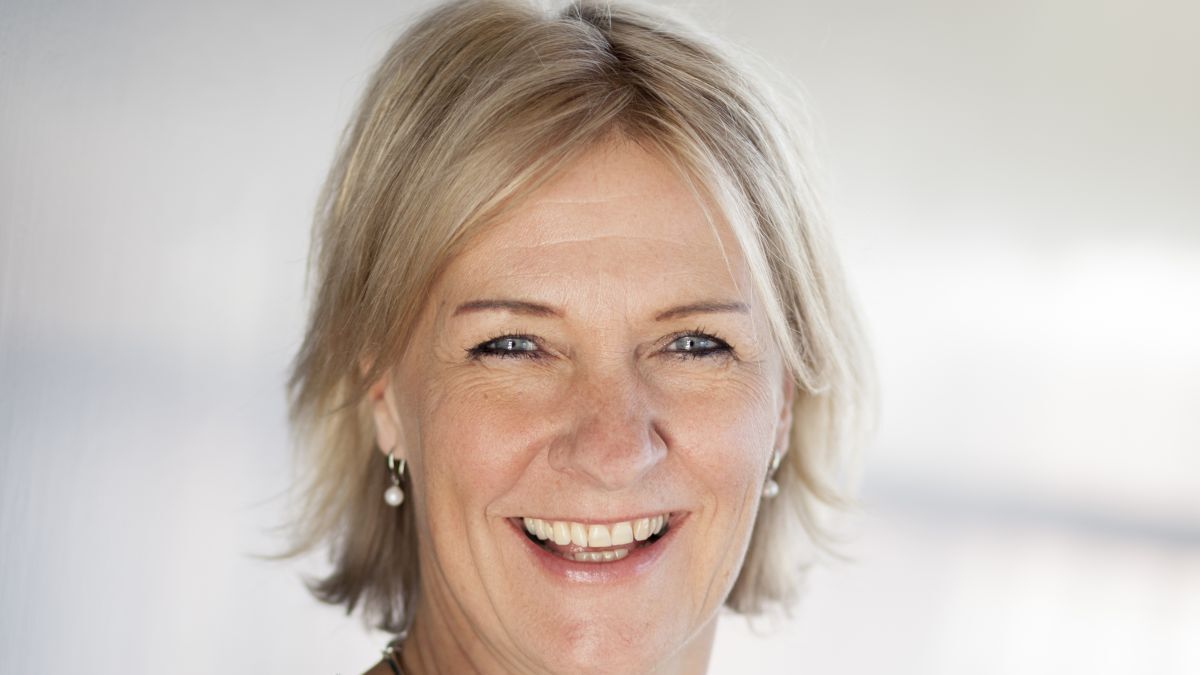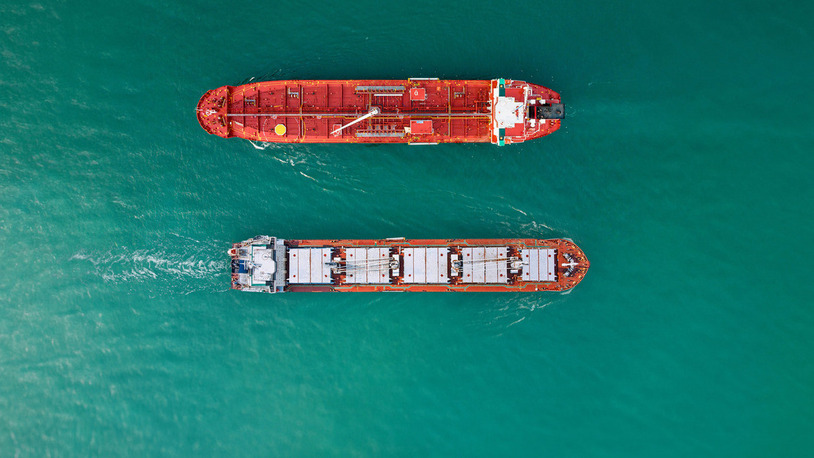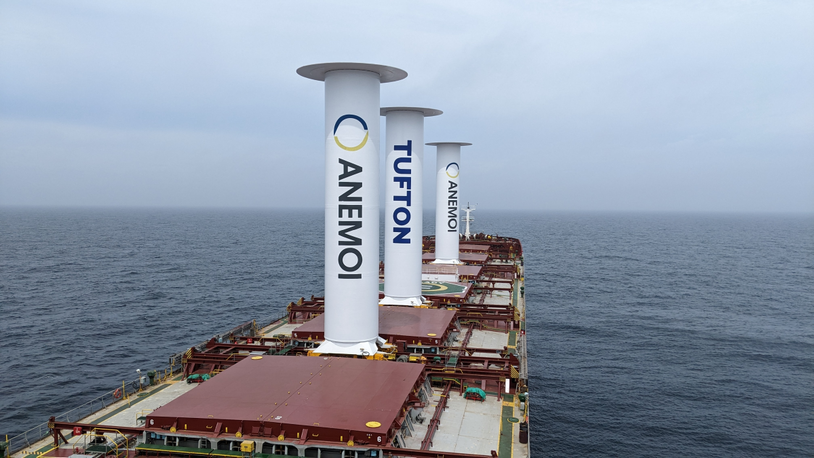Business Sectors
Contents
Register to read more articles.
Biofuels: a natural choice for shipping’s decarbonisation
Biofuel pilot projects conducted by dry bulk shipowners have shown promise in reducing GHG emissions, requiring no engine or engine system modifications
Biofuel blends are increasingly being tested as drop-in fuels in pilot projects between shipowners, charterers and cargo owners to advance decarbonisation ambitions and meet upcoming IMO ship energy efficiency and carbon intensity targets.
Based on recent trials involving one of its dry bulk carriers, Seanergy Maritime believes biofuels can contribute “significantly to the imminent need to reduce greenhouse gas (GHG) emissions.”
In biofuel trials on the 2009-built capesize vessel Friendship on a voyage between Singapore and Saladanha Bay, South Africa, the Greek owner reported a 10% reduction in CO2 emissions as compared with conventional marine fuel.
During the trials, very low-sulphur fuel oil (VLSFO) was blended with 10% second-generation, waste-based and ISCC-certified UCOME (Used Cooking Oil Methyl Ester).
“We strongly believe that using biofuels, in combination with energy saving devices installed or to be installed on our vessels, will cater for a smooth transition to greener energy, whilst providing a competitive and compliance advantage for early movers,” notes Seanergy Maritime technical director Stelios Psillakis. “Beyond 2030, we expect the marine industry to be technologically mature [enough] to adopt alternative energy solutions,” he adds.
TotalEnergies bunkers vessel in Singapore
Seanergy Maritime co-operated with charterer NYK Line and mining company Anglo American — a signatory of the Sea Cargo Charter — in the pilot project, while TotalEnergies Marine Fuels supplied the fuel in the Port of Singapore.
Friendship was the first ship bunkered with blended biofuel-VLSFO in the port by TotalEnergies Marine Fuels. TotalEnergies Marine Fuels reports the UCOME bio-component, sourced from the circular economy, can achieve more than 80% reduction of GHG emissions compared with heavy fuel oil on a well-to-wake basis. Consequently, the delivered B10 biofuel blend provides a reduction of up to 10% in GHG emissions.
Besides demonstrating the potential of using biofuels as drop-in fuels to meet IMO’s carbon emissions reduction targets, the trial also underpins the fuel supplier’s efforts to create a local supply chain, complete with land storage, blending and the eventual bunkering operation. The Maritime and Port Authority of Singapore (MPA), Singapore bunker barge company V-Bunkers and tank storage company Vopak Terminals Singapore at Penjuru supported the effort.
“We strongly believe that biofuels will cater for a smooth transition to greener energy”
V-Bunkers is Vitol’s Singapore barge operations company. Vitol Asia head Mike Mueller says: “Biofuel bunker blends represent an ‘available-right-now’ decarbonisation option for shipowners and we are committed to making these blends more readily accessible to our shipping customers.”
The Vitol bunker team adds: “Right now it’s a nascent market in Asia and the world. The shipping community is still experimenting with many biofuel sources. We are here to assist our customers in their trials. Our supply chain is ready and has all the right industry accreditation to ensure the integrity of the biofuel, from storage to delivery.”
Weighing in on the pilot project, TotalEnergies Marine Fuels general manager of Asia trading and operations, Laura Ong says: “This trial has allowed us to initiate the structuring of a supply chain with local expertise to create a sustainable, cost-efficient and low-carbon biofuel offer for the shipping sector in the region.”
With the implementation of IMO’s Energy Efficiency Existing Ship Index (EEXI) and Carbon Intensity Indicator (CII) just months away and 2030 creeping up fast, such trials are critical to shipowners. The regulations will come into force on 1 January 2023. IMO has set a target of reducing annual GHG emissions in shipping by at least 40% by 2030 and pursuing a 70% reduction by 2050.
“Sustainability, energy efficiency and a reduction of GHG emissions are on the very top of our strategic agenda,” says Seanergy Maritime chairman and chief executive Stamatis Tsantanis.
“Our co-operation with our charterers affirms the obvious notion that the environmental targets can be met with the alignment of interests among shipping companies, charterers, regional governments and IMO. Until new technologies become widely available in the next years, we should focus on implementing proven solutions on the existing global fleet with the support of all stakeholders of our industry. Seanergy is taking decisive steps towards this direction,” says Mr Tsantanis.

Biofuel bunkering in Singapore
Bunkering of Friendship was not the first biofuels trial in the Port of Singapore. Dutch sustainable fuels pioneer GoodFuels completed biofuel bunkering at the Port of Singapore in April 2021 on a bulk carrier owned by Oldendorff Carriers and chartered by mining company BHP. It’s another case of an owner working with a charterer and cargo owner in a pilot project involving biofuel to reduce GHG emissions.
GoodFuels’ biofuels are produced from feedstocks which are certified as 100% waste or residue, including sawdust, crude tall oil (a by-product of wood pulp manufacture), tallow, sewage sludge and used cooking oils from industrial applications.
GoodFuels followed up its biofuel bunkering success in Singapore with the refuelling of the 63,529-dwt bulk carrier Sydney Eagle during its call at Terneuzen, the Netherlands. Reporting on the pilot in December, the sustainable marine fuel supplier said: “Eagle Bulk Shipping’s carbon footprint is substantially reduced when using GoodFuels’ sustainable marine biofuel, which enables an 80-90% well-to-exhaust CO2 reduction.”
Jonathan Dowsett, director of fleet performance for the US-based shipowner, says Eagle Bulk Shipping was “extremely pleased with the results of our first biofuel-powered test voyage.”
Meanwhile, Oldendorff is continuing its efforts on biofuel. In January, a trial voyage using biofuel for the CBH Group, the largest agricultural co-operative in Western Australia, was performed onboard Edwine Oldendorff on a voyage from Australia to Vietnam. The vessel loaded 30,000 tonnes of sustainably certified malting barley from the Albany Grain Terminal in Western Australia for discharge in Vietnam using biofuel, supplied by BP. Edwine Oldendorff was bunkered with a second-generation biofuel blend, which is expected to result in 15% fewer GHG emissions compared to conventional fossil fuels, according to the supplier.
The emissions reduction potential has been analysed as part of Oldendorff Carriers’ research agreement with MIT in Cambridge, Massachusetts.
A carbon-neutral beer?
CBH chief marketing and trading officer Jason Craig says: “Customers across the world are increasingly seeking to source sustainable products, including sustainable grain. It is our role, as Australia’s leading grain exporter, to take the necessary steps to lower carbon emissions along our supply chain. Biofuel is one low-carbon option that could be part of the solution to reducing emissions in the shipping industry.”
“Biofuel is one low-carbon option that could be part of the solution”
The malting barley will be delivered to Vietnam’s leading malting company, Intermalt. It services a number of brewing customers, the largest being Heineken, which is aiming to reach net zero from ‘barley to bar’ by 2040. In 2020-21 CBH sold 1.2M tonnes of sustainable certified grain and reduced Scope 1 and 2 carbon emissions on a per-tonne basis by 38%.
Ben Harper, managing director at Oldendorff Carriers, Melbourne, says: “Collaboration is crucial for us all to learn and share information about the best paths in our efforts to decarbonise the supply chain.”
Oldendorff is one of the world’s largest charters of dry bulk ships; it owns and bareboat charters 180 vessels and has another 570 under time charter.
B20 blend tested
In February, Big Board-listed Safe Bulkers reported on several pilot projects using biofuels in the ship’s main engine and diesel generators.
The first pilot project was carried out on the 2020-built bulk carrier Troodos Oak which received 346 metric tonnes of biofuel blend B20, consisting of 20% Spent Bleaching Earth Oil mixed with conventional VLSFO. The project was performed in co-operation with the vessel’s charterer Cargill, Cargill Marine Fuels and Oilchart as suppliers of the blended bio bunkers, class society Lloyd’s Register and the Cyprus Flag.
Adhering to the guidelines of the EU’s Renewable Energy Directive “RED II” on calculating CO2 emissions, the trials resulted in a 13.54% CO2 equivalent reduction compared to conventional VLSFO. No modifications to the existing ship equipment were required. No operational abnormalities or wear were observed in main engine and diesel generators.
For the purpose of CO2 emissions reporting schemes, European Union – MRV scheme and IMO DCS scheme, the reported CO2 emissions as verified by LR and accepted by the Cyprus Flag are 20% lower compared to VLSFO.
Working with Cargill, Safe Bulkers will expand its pilot project to additional vessels using higher biofuel percentage blends, while adding the measurement of NOx emissions.
Safe Bulkers president, Dr. Loukas Barmparis, calls the results from the Cargill pilot project “encouraging,” adding: “We will continue to assess their use in parallel to other available technologies, targeting to optimise our operations and improve our environmental footprint.’’
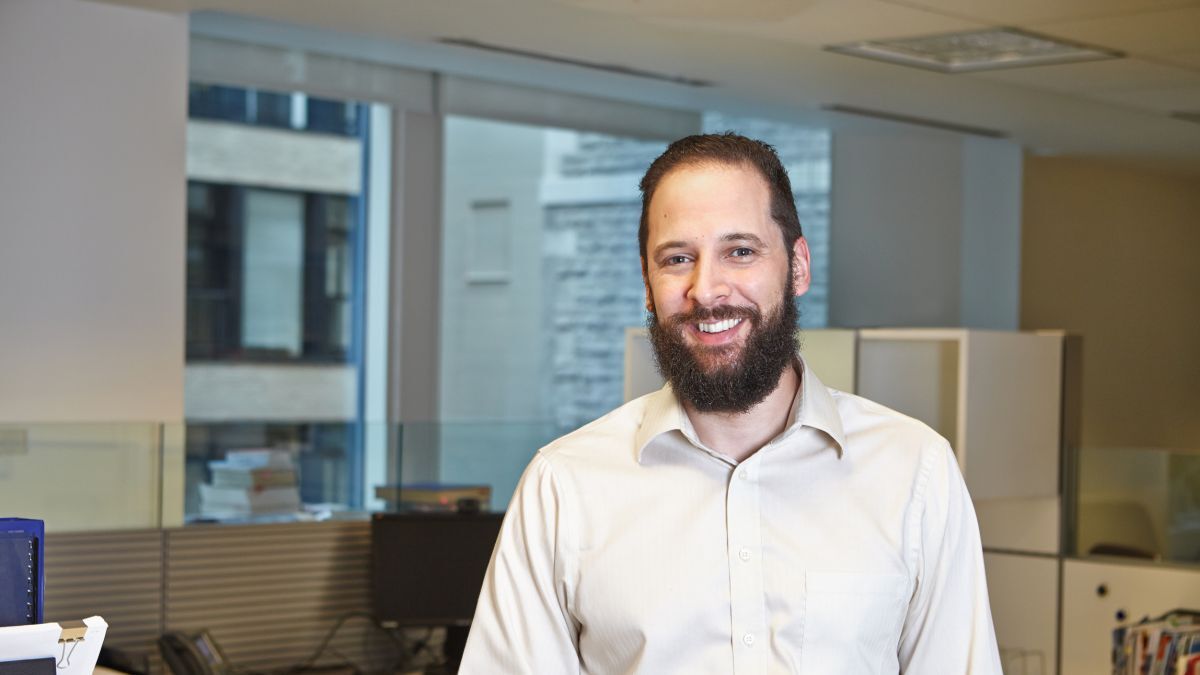
Challenges with biofuels
As with all alternative fuels, cost, scale and availability are challenges. Cargill, one of the world’s largest charterers, operating 650 vessels at any one time, is tackling these issues through collaboration with Maersk Tankers. The two have partnered in an effort called Pure Marine Fuels, a new bunker service for tramp shipping companies that provides access to future marine fuels, including biofuels. Between the two companies, they purchase about 3.5M tonnes of marine fuel annually. The idea behind Pure Marine Fuels is to provide “enhanced access to competitive pricing, optimised bunker logistics and improved claims support.”
One of the environmental concerns around using biofuels is the potential increase in NOX emissions. This was highlighted by Michael Banning, a technical consultant fuel specialist and surveyor at Exponent International, during the Riviera Maritime Media webinar The case for adopting biofuels in the next five years, held in February. Mr Banning noted biofuels must comply with MARPOL Annex VI 18.3.2.2 which requires that “these non-petroleum-derived fuel oils cannot cause an engine to exceed the applicable NOx emissions.”
Joining the conversation at the webinar, Conidia Bioscience technical consultant Pierre Poitras said: “Part of the challenge of using biodiesel is its inherent affinity for water compared to conventional fuels. In the presence of moisture and water, biodiesel can form a stable emulsion, increasing the potential risk for bacterial growth to develop in the fuel system. Its use will increase exponentially in the next few years. Biodiesel, with a blend greater than 25%, is foreseen. At this level, water management in the fuel supply chain and shipboard equipment becomes critical.”
“Part of the challenge of using biodiesel is its inherent affinity for water compared to conventional fuels”
Mr Poitras said unmonitored microbial growth in fuel can cause filter blocking, increased injector wear, corrosion in fuel tanks and systems and reducing engine efficiency.
But for Canadian shipowner CSL, “it has been a very positive experience,” said Yousef El Bagoury, CSL Group naval architect, in discussing the Canadian shipowner’s biofuels programme. “We have never had any fuel quality or supply issues,” he said.
CSL, which owns and operates the world’s largest fleet of self-unloading vessels, first tested biofuel in gensets in 2019, before implementing its use in main engines in 2020. CSL sources a second-generation B100 biofuel in North America, made from soybean product waste. The biofuel is burned in the two-stroke MAN 6S50ME-B main engine of the 36,364-dwt bulk cargo carrier CSL Welland and the two medium-speed MaK 6M32 prime movers of the 35,439-dwt self-unloading bulk carrier CSL Rt Hon Paul J Martin.
“Biofuel can reduce life-cycle GHG emissions by up to 90% compared to fossil fuels, due to the circular CO2 cycle,” said Mr El Bagoury.
“Secondly, it’s a drop-in fuel. We have not spent any money making changes to the engine or its supporting components. Other benefits are it is very low in sulphur, and it can help with ECA zone compliance and reductions in particulate matter.”
Mr El Bagoury also noted how well the crew has embraced its use: “It is easy to work with. It is business as usual for the crew, and in the event of a spill, there is less environmental impact.”
CSL has been measuring NOx emissions in accordance with OEM guidelines and has noticed only a minor increase. “It has increased by 0.2 grams per kWh on Welland — still within Tier II limits,” said Mr El Bagoury. SOx emissions have been positive as well — “below detectable limits of the measuring equipment,” he said. Similar results were recorded on RT Hon Paul J Martin.
Related to this Story
IMO’s net-zero plan poised to pressure ageing fleet with rising costs
Events
TUGTECHNOLOGY '25
Reefer container market outlook: Trade disruption, demand shifts & the role of technology
Asia Maritime & Offshore Webinar Week 2025
Marine Lubricants Webinar Week 2025
© 2024 Riviera Maritime Media Ltd.


